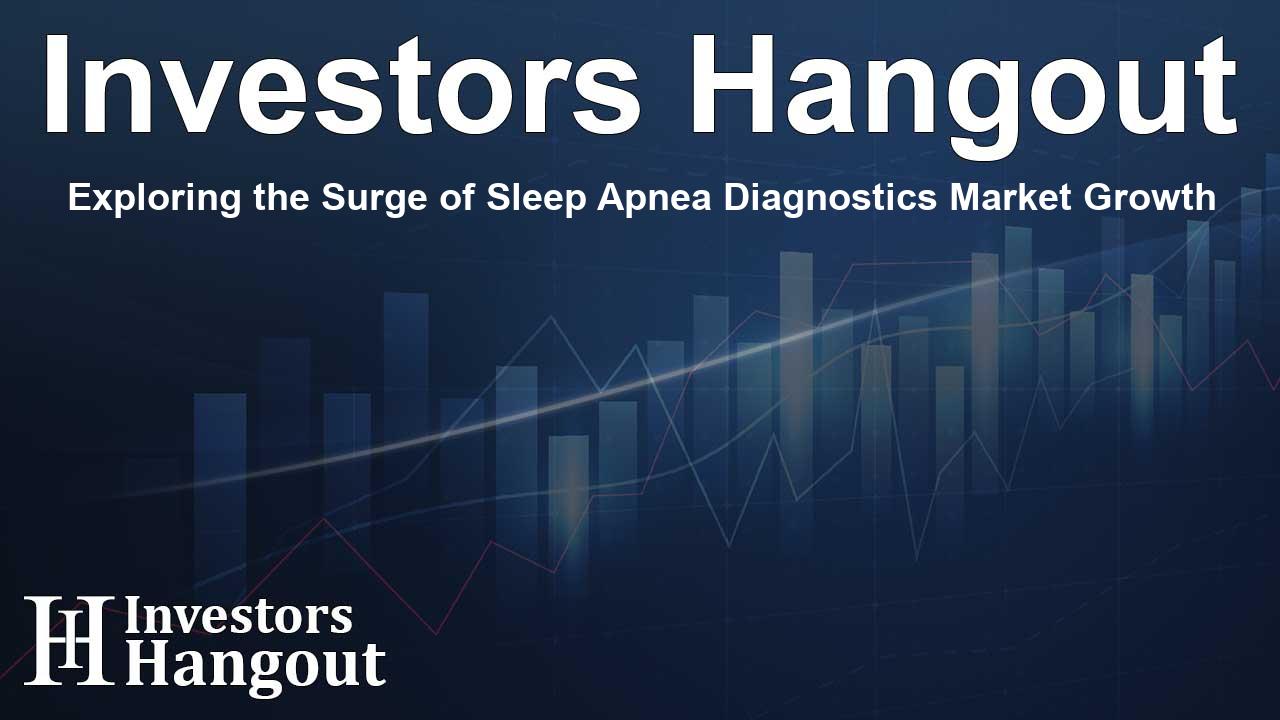Exploring the Surge of Sleep Apnea Diagnostics Market Growth

The Promising Growth Trajectory of Sleep Apnea Diagnostic Systems
As awareness of sleep disorders increases, the sleep apnea diagnostic systems market is projected to see significant growth over the coming years. Analysts anticipate that this market will reach a remarkable USD 6,223.7 million by 2035, with a steady growth rate, signifying a compound annual growth rate (CAGR) of 3.3% from 2025 onwards. This upward trend can be attributed to advancements in technology and a rise in understanding of the health implications associated with obstructive sleep apnea (OSA).
Factors Fueling Market Expansion
Understanding the Underlying Causes of Market Growth
Approximately 1 billion people are affected worldwide by obstructive sleep apnea, making it a common yet concerning health issue. This prevalence amplifies the demand for effective diagnostic solutions to identify and treat the condition, considering the serious health risks that untreated sleep apnea can pose, including cardiovascular disease and diabetes.
Government Initiatives and Technological Innovations
Government efforts encouraging early diagnosis and treatment, paired with more robust reimbursement policies for sleep apnea diagnostics, are significantly contributing to market expansion. Furthermore, cutting-edge technologies, including AI-driven diagnostics, portable sleep testing devices, and enhanced polysomnography (PSG) equipment, are paving the way for improved diagnostic accuracy and patient-centered care.
Market Overview and Key Insights
In 2025, the estimated market size for sleep apnea diagnostic systems stands at USD 4,483 million, reflecting a strong upward trajectory as the healthcare sector adapts to changing patient needs. Historical data indicates that in 2024, the market was valued at USD 4,311 million, illustrating a steady increase from USD 3,779.9 million in 2020.
Key Drivers Behind Market Growth
- Rising Awareness: There’s a heightened recognition of how poor sleep can affect mental and physical health, spurring demand for sleep disorder diagnostics.
- Home-Based Solutions: Home diagnostics are favored for their convenience, leading to a surge in demand for at-home testing options.
- Wearable Technology Integration: Many companies are embedding sleep tracking features into existing wellness devices, making them more appealing to consumers.
Challenges and Opportunities
Despite the optimistic outlook, the market faces certain obstacles. High costs of diagnostic devices and limited access to specialized sleep labs in developing regions could impact growth. Nevertheless, the emergence of affordable wearable and smartphone-integrated diagnostic solutions offers a promising avenue for increasing market access and driving further adoption.
Expanding Patient Awareness and Advanced Diagnostics
The integration of sleep apnea diagnostics with wearable health technology enhances user engagement and facilitates better management of sleep health. With a growing emphasis on mental health and overall wellness, healthcare providers and life science companies are intensifying their focus on creating user-friendly diagnostic tools.
The Potential of Undiagnosed Sleep Apnea Patients
Compelling statistics reveal that nearly 936 million individuals globally struggle with sleep apnea, yet a substantial portion remains undiagnosed. With 425 million patients in need of treatment, there is a substantial opportunity for market stakeholders to bridge this gap by enhancing awareness and access to diagnostic devices.
Technological Enhancements Impacting Diagnostics
Recent trends demonstrate the rising preference for advanced diagnostic systems among patients. This shift is primarily fueled by increasing health consciousness, particularly concerning lifestyle-related disorders. With new artificial intelligence applications and real-time data analytics in PSG devices, efficiency stands to be greatly improved.
Key Players Shaping the Market Landscape
Several key organizations are central to the evolution of the sleep apnea diagnostic systems market. Industry leaders include Koninklijke Philips N.V., Becton, Dickinson and Company, ResMed Inc., and Advanced Brain Monitoring Inc., among others. These companies are committed to research and development, continually innovating to meet growing patient needs effectively.
Sleep Apnea Market Segmentation
The landscape of sleep apnea diagnostic systems is diverse:
- By Product: The market includes PSG devices, nasal flow sensors, peripheral capillary oxygen saturation (SPO2) monitors, and actigraphy devices.
- By End User: Diagnostic services are utilized across home care settings, hospitals, and sleep centers.
- By Region: Major markets include North America, Europe, the Asia-Pacific region, and beyond.
Frequently Asked Questions
What factors contribute to the growth of the sleep apnea diagnostic systems market?
Factors include rising awareness about sleep disorders, technological advancements in diagnostics, and significant government initiatives promoting early diagnosis.
What role do wearable devices play in this market?
Wearable devices enhance diagnostic capabilities and patient engagement, making it easier for individuals to manage their sleep health directly.
How significant is the impact of undiagnosed patients on market growth?
The large pool of undiagnosed patients presents a significant market opportunity for companies to offer accessible diagnostic solutions.
What are the key challenges faced by this market?
High costs and limited access to sleep labs in developing countries are notable barriers that need addressing for sustained market growth.
Which companies are leading the market?
Some leading companies in this space include Koninklijke Philips N.V., Becton, Dickinson and Company, and ResMed Inc., all of which are pioneering innovative solutions.
About The Author
Contact Addison Perry privately here. Or send an email with ATTN: Addison Perry as the subject to contact@investorshangout.com.
About Investors Hangout
Investors Hangout is a leading online stock forum for financial discussion and learning, offering a wide range of free tools and resources. It draws in traders of all levels, who exchange market knowledge, investigate trading tactics, and keep an eye on industry developments in real time. Featuring financial articles, stock message boards, quotes, charts, company profiles, and live news updates. Through cooperative learning and a wealth of informational resources, it helps users from novices creating their first portfolios to experts honing their techniques. Join Investors Hangout today: https://investorshangout.com/
The content of this article is based on factual, publicly available information and does not represent legal, financial, or investment advice. Investors Hangout does not offer financial advice, and the author is not a licensed financial advisor. Consult a qualified advisor before making any financial or investment decisions based on this article. This article should not be considered advice to purchase, sell, or hold any securities or other investments. If any of the material provided here is inaccurate, please contact us for corrections.
